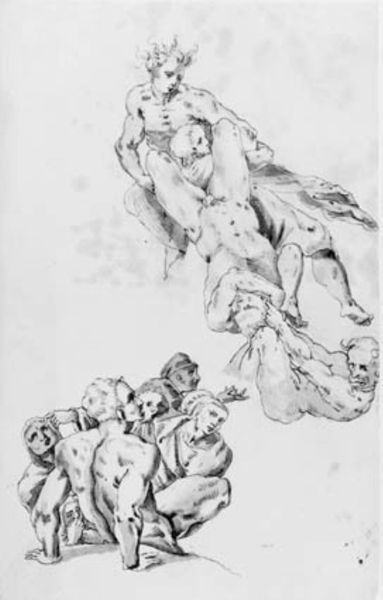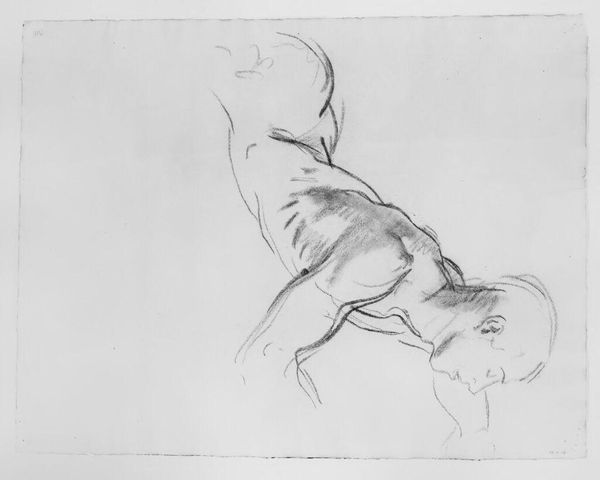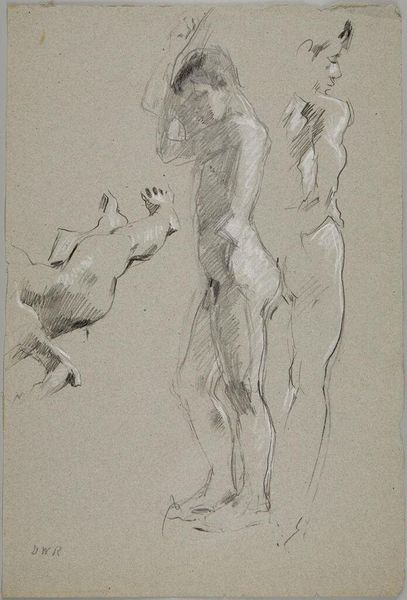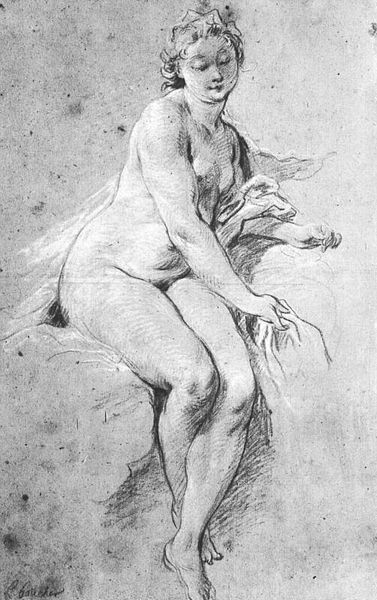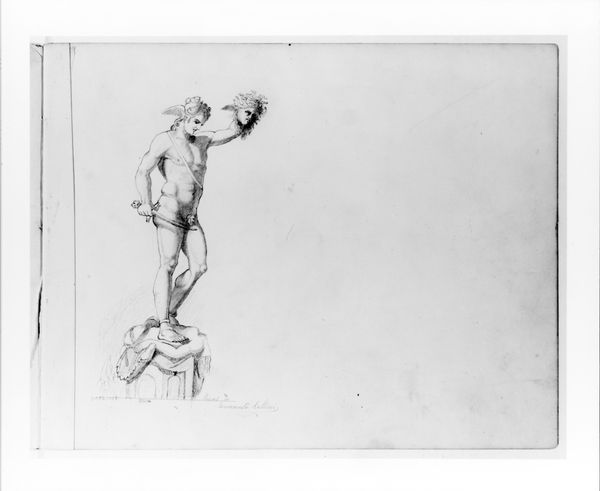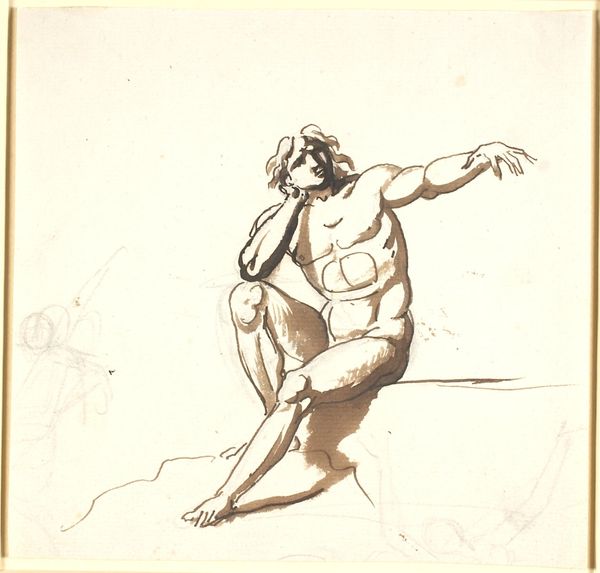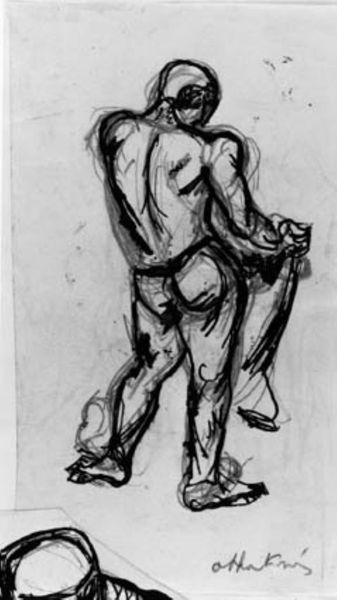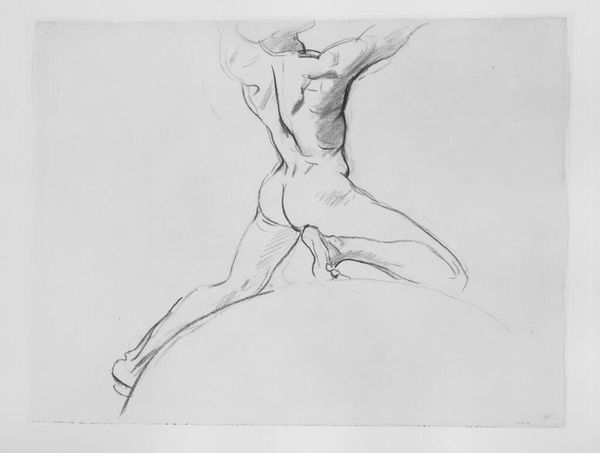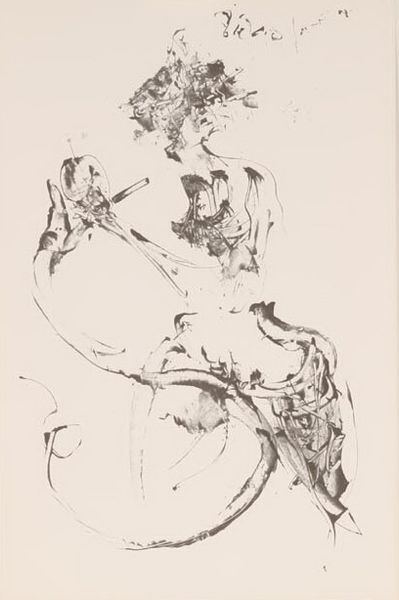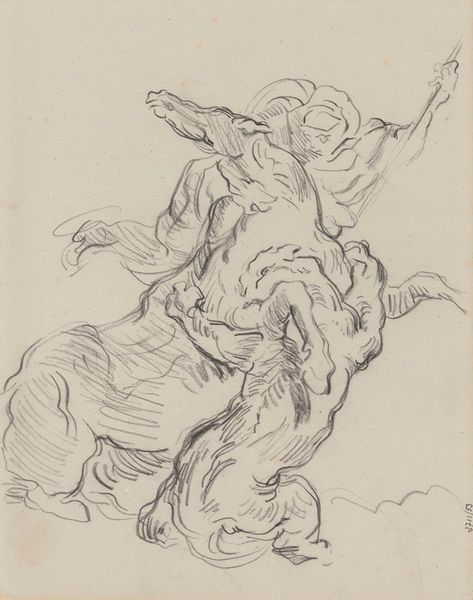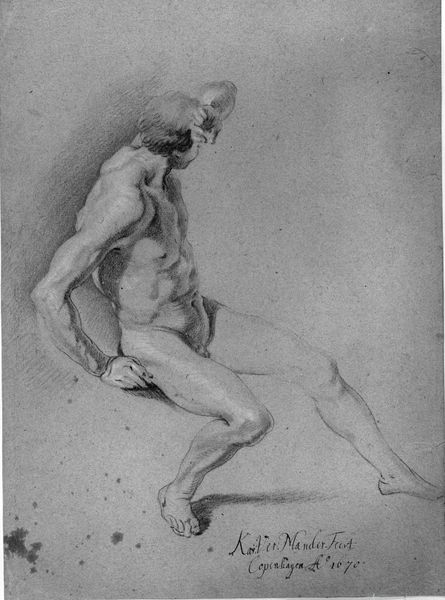
drawing, pencil
#
drawing
#
pencil sketch
#
figuration
#
pencil drawing
#
pencil
#
genre-painting
#
academic-art
Dimensions: 9 7/8 x 7 7/8 in. (25.1 x 20 cm)
Copyright: Public Domain
Editor: This is Walter Shirlaw's "Studies of Bathers Disrobing," created between 1838 and 1909, rendered in pencil. It feels like a really classical subject, but the rough sketch style gives it a surprisingly modern feel. What do you see in this piece? Curator: The dynamism and supposed casualness of these studies, executed in pencil, ironically speak volumes about the cultural codes at play. Consider the gaze: who is invited to witness these figures in such intimate moments of undress? Editor: Is it significant that they're bathers? Like, public bathhouses at the time? Curator: Precisely. The rise of public bathhouses in the 19th century offered a fascinating social space. While seemingly democratic, these spaces often reinforced class and gender divides, shaping social performances and visual representations like this one. Think about who had access, whose bodies were being displayed, and for whom. Editor: So it's not just about the artistic skill, but the social implications? The *who* and *why* behind it? Curator: Absolutely. Shirlaw presents an interesting intersection here. He’s working within the Academic tradition, which has historically objectified the female form. Yet, he also pushes back with an incomplete, sketch-like, almost confrontational approach. How do you think that informs the power dynamic? Editor: I see what you mean. It’s like, the incompleteness pushes back against that smooth, idealized objectification by making the viewer work to 'complete' the figures, almost like taking ownership of the artistic vision itself. Curator: Exactly! So much of art history hinges on whose stories are told and who gets to tell them. We need to continually question the motivations, assumptions, and the subtle biases embedded in art to truly understand it. Editor: That's a really interesting way to look at it; shifting the focus to who is 'allowed' to look, not just at what's being shown. Thank you!
Comments
No comments
Be the first to comment and join the conversation on the ultimate creative platform.
